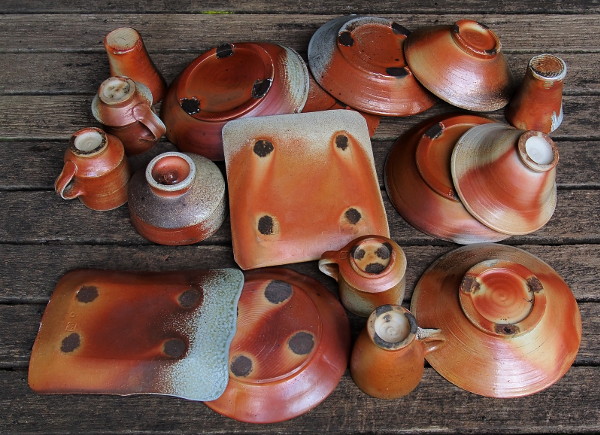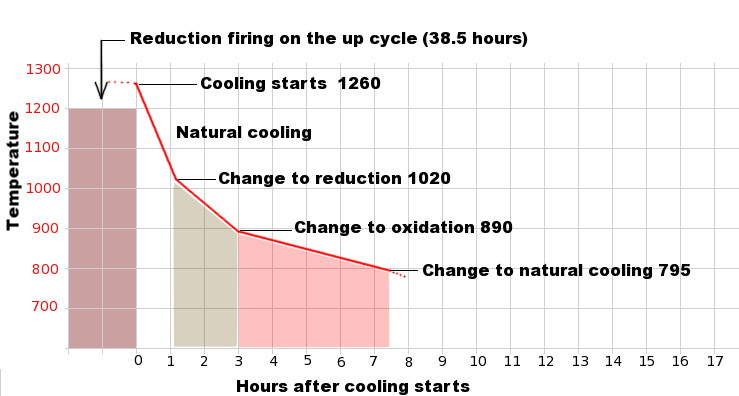The tests shown on the
Test results page were fired in our
Oztrain kiln and subjected
to the
Rosser reduced
cooling
procedure. The firing took 38.5 hours to the start of cooling and was
supervised during cooling for a further 7.5 hours. The wood used
was Flooded gum (
Eucalyptus grandis)
for the first 9 hours, then we changed to Blackwood (
Acacia melanoxylon).
The up cycle was subjected to heavy reduction, with the usual
atmospheric cycle occurring within each stoking period. The ember bed
was very deep at the start of cooling and no additional reducing
material was needed during the crucial reduction period between 1000
and 900 deg. An LPG gas burner was introduced during the oxidised
cooling between 890 and 795 degrees to extend this period of cooling to 4 hours.
An oxygen probe was
employed during cooling to make sure that the
kiln atmosphere was as required during the crucial stages. No kiln
atmosphere readings were taken during the cooling from top temperature
down to 1020 degrees. The kiln atmosphere may have been reducing during
this period but in other firings was certainly oxidising and the
red/orange flashing results were similar to the ones achieved this
time. Quite a lot of embers remained when the kiln
reached a reported 795 degrees and supervision of the atmosphere
ceased. There
would have been air leakage into the kiln for the rest of the cooling
as no attempt was made to seal it with slip. Initially at
least the atmosphere in the kiln was oxidising as cooling
continued below 795 degrees, but it is conceivable that the atmosphere
became less oxidising as the ember bed burnt down.


